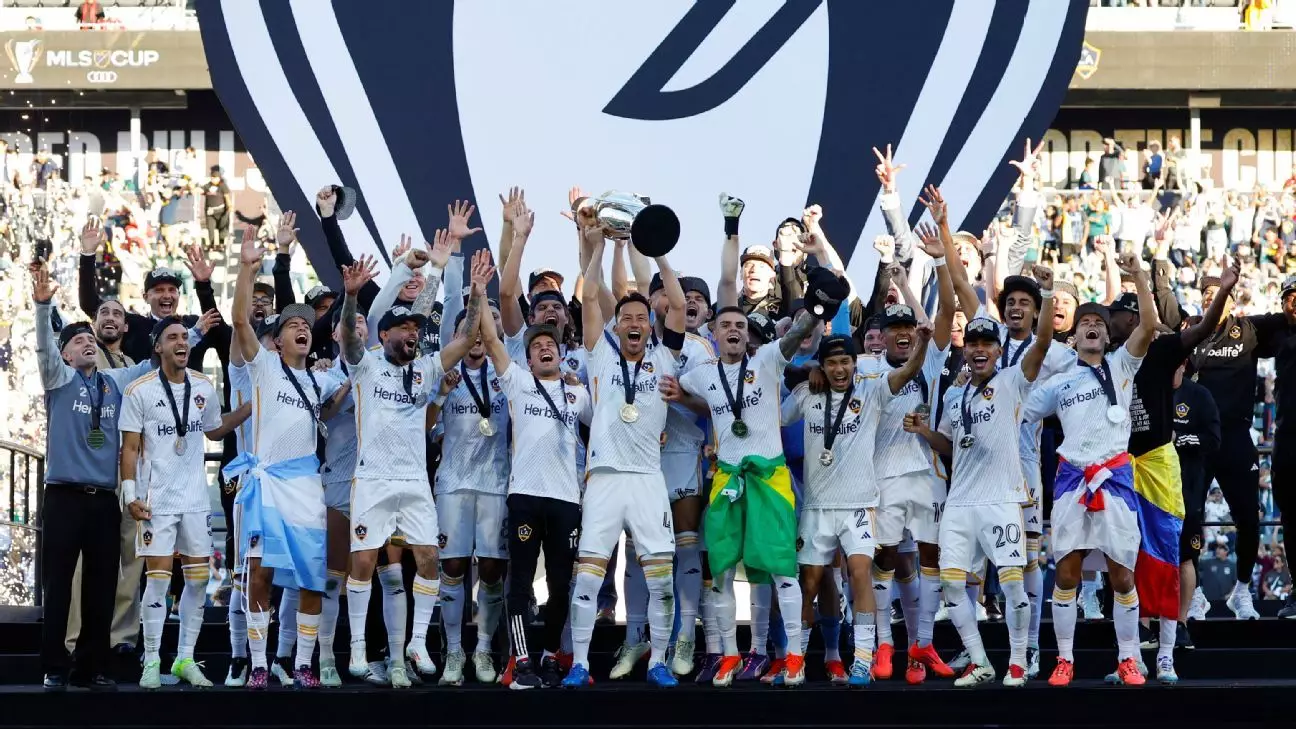The Los Angeles Galaxy, a name synonymous with glory in Major League Soccer (MLS), finds itself in a precarious situation regarding its General Allocation Money (GAM) for the 2025 season. According to the league’s recent announcements, the Galaxy has completely depleted its allotted $2.93 million in GAM funds, raising questions about the team’s strategic financial management. At the heart of this dilemma is the allocation of resources that is vital for any team’s success, especially one striving to maintain its championship legacy. The situation challenges the Galaxy’s front office to rethink and recalibrate its approach to roster construction as it seeks to remain competitive in an evolving league landscape.
The concept of GAM is crucial for understanding MLS roster mechanics. It provides teams with additional salary budget flexibility, allowing them to retain or sign players who might otherwise exceed their designated salary cap. MLS teams are also granted a salary budget of $5.95 million for the 2025 season, alongside Targeted Allocation Money (TAM), which serves a different purpose by enabling teams to attract players around the Designated Player salary threshold of $743,750. This multi-tiered financial structure reflects the complex interplay of budgeting that teams must navigate. Hence, the situation with GAM provides only a partial snapshot of the Galaxy’s roster flexibility and not the complete picture of their financial capabilities.
A Historical Context: Legacy Meets Modern Constraints
LA Galaxy’s impressive roster historically included star players who have elevated the club’s status, but the current GAM predicament highlights a shift in the financial landscape of MLS. The Galaxy has been forced to part ways with crucial team members who contributed to their previous successes, including MLS Cup MVP Gastón Brugman and forward Dejan Joveljic. The release of such key players suggests a significant departure from an era characterized by star-studded lineups and a winning mentality. General Manager Will Kuntz’s challenge thus extends beyond merely managing finances—he must also rebuild team morale and competitive stature while operating within stringent budgetary confines.
The implications of GAM depletion are profound, suggesting an urgency in the Galaxy’s operational dynamics. While some teams actively engage in trades and transactions to expand their GAM and salary budget provisions, the Galaxy appears to be restricted. Other MLS teams, such as Atlanta United, have managed to effectively utilize GAM through strategic player transactions, including high-profile signings and careful salary management. Atlanta’s aggressive spending of $5.4 million in GAM emphasizes a contrasting approach, showcasing a proactive management strategy that the Galaxy may need to adopt moving forward.
Future Strategies: Rethinking Roster Dynamics
Despite its current GAM predicament, the Galaxy still possesses certain avenues to explore. A deeper understanding of internal transfer opportunities, trades, and roster adjustments could pave the way for roster rejuvenation. Although the team may have exhausted its current GAM, it can still leverage player trades to cultivate new sources of GAM funding. Creating a robust player development pipeline and focusing on scouting young talent could allow the Galaxy to nurture cost-effective prospects rather than relying solely on expensive marquee signings.
Moreover, embracing a holistic approach to player management could serve the Galaxy well in this transition. By setting clear financial priorities and aligning recruitment efforts with long-term strategies, the team might reconfigure its roster without feeling the constraints imposed by their depleted resources. A balance of maintaining competitive standards while nurturing emerging players could very well be the key to restoring the team’s prominence in the league.
Navigating the New Reality of MLS
As the MLS evolves, earlier models of success defined by high-profile signings must yield to more innovative and sustainable methods of roster building. The Galaxy’s recent GAM challenges mirror broader trends in the league, epitomizing a shift towards smarter spending and judicious management of resources. For a club with such prestigious history, the ability to adapt to these new realities will prove integral to its future.
In sum, while the LA Galaxy faces an uphill battle due to its current GAM situation, this moment also presents an opportunity for strategic rethinking. Transitioning from a reliance on big-name acquisitions to a diversified, well-rounded squad will likely define the next chapter for the club in a fiercely competitive MLS environment. The challenge lies not just in managing finances effectively, but also in cultivating a vision for building a resilient team that can thrive in any circumstance.

